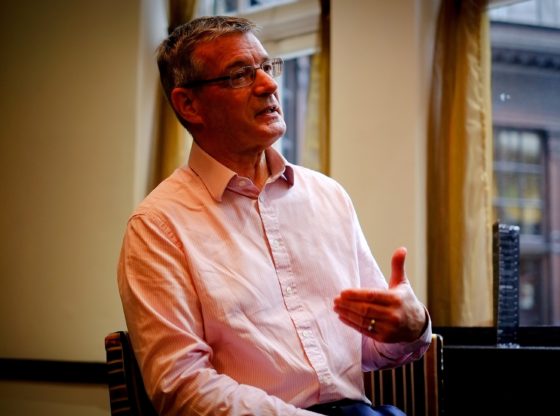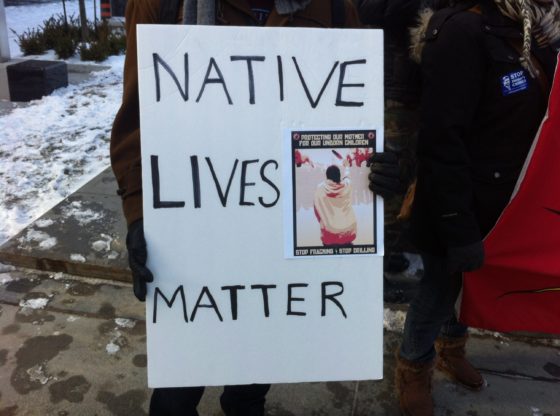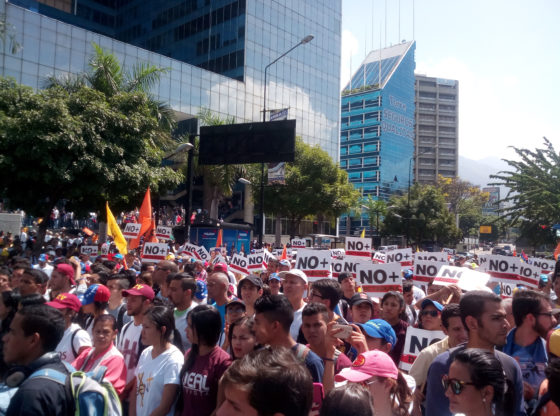In light of the recent shooting of Justine Damond in Minneapolis, Caitlin Smith examines the effectiveness of police body cameras. She suggests that the camera itself is not a realistic solution to deep institutional problems within the US police force. Proper oversight and external checks and balances are needed too.
In 2014, the United Nations published a report on excessive use of force within the United States (US) police force. Since then, protests have continued across the US, following the deaths of young black men like Michael Brown and Philando Castile. After a string of prominent shootings, community tensions are running high and serious levels of racial discrimination have been exposed. Since the US government teamed up with The Guardian to report on police related deaths, the numbers accounted for have increased further. (‘The Counted’ list of those killed by police in the US can be found here).
One way to try and deal with this issue is to fit police with body cameras as a way to increase transparency and accountability. Although, there is some evidence to suggest that police body cameras can help prevent the escalation of interactions between police and individuals, studies have only scratched the surface of this technology. But as civilians and suspects continue to die at the hands of police officers, the roll-out of body cameras has not had the desired success.
Despite former President Barack Obama announcing a $23.2 million project in May 2015 to provide body cameras for police across 32 different states, police brutality remains a serious issue in the US. Attorney General Loretta Lynch claimed the Obama project would “enhance transparency, accountability and credibility” in law enforcement, but as the most recently publicised case of Justine Damond shows, there is no guarantee that police officers’ cameras will even be switched on.
It seems naïve to think that those in power will always fairly and transparently reform and freely admit mistakes. An outside eye is often necessary to review and reform effectively.
Damond was shot through the police car window as she approached to speak to officers she had called to her home. They were all wearing body cameras, but the Minnesota Police Department claims none of them were turned on. As academics and journalists have pointed out, police footage has mysteriously disappeared, or been withheld from public view. Without proper checks and balances to ensure they are properly used and are accessible to the public and in a court of law, the body camera seems a superfluous exercise.
TRUST, TRANSPARENCY and TRAINING
We cannot deny that this case has hit the headlines partially because of the victim’s race and Australian citizenship. Yet, police violence toward black and other minority ethnic groups is a regular occurrence. We should be careful not to demonise individual police officers, as it seems clear that the training of US police officers has not been stringent enough. A 2015 report into the Philadelphia Police Department found that there was not enough transparency between the force and the community, contributing to damaging relations and distrust between the two. It also noted a lack of comprehensive training for officers in the force relating to field interactions and the use of body-worn cameras.
A two-fold problem may be at play within US law enforcement: racial discrimination and insufficient training. The act of wearing a camera seems unlikely to deal with these issues effectively. Rather, the police body camera as it stands is more of a surveillance tool targeted at specific groups who are seen as suspects, rather than as tools for transparency and accountability. The authorities are the ones in control of their own image and when this is presented as accountability, we must all be suspicious. Not only this, but presented with deep institutionalised issues of racism, discrimination, distrust and lack of training, the camera itself is just a new addition to the institutional game. It merely builds on the same complex web of ideas, opinions, experiences and accepted norms.
As we have checks and balances over politics through an independent legal system, a similar process should be in place for police forces too. It seems naïve to think that those in power will always fairly and transparently reform and freely admit mistakes. An outside eye is often necessary to review and reform effectively. This could also be achieved, or at least assisted, if concrete laws were in place for body cameras to be consistently turned on, and for the forces involved to be legally obliged to share the information recorded when required (protecting the privacy of suspects while doing so).
CITIZEN SURVEILLANCE and the MOBILE PHONE
The battle between the community and authorities has another dimension as well. As complete transparency of the police force seems a far-off thing, community and activist groups have taken it upon themselves to carry out their own surveillance; what has been termed ‘sousveillance’, literally meaning ‘watching from below’.
The mobile phone has become a central tool of transparency and accountability for millions of individuals world-wide and it is now firmly embroiled in the police brutality discourse. Although there are security and privacy issues with the smart-phone lifestyle, this is an unprecedented time for freedom of information. Being in the public eye has taken on a completely new meaning, and with vigilant citizens and groups harnessing surveillance technologies those in authority are less able to hide.
We are experiencing the beginning of a new world of media, where Philando Castile’s murder was live streamed on Facebook by his girlfriend.
Black Lives Matter have built a global network partially by harnessing citizens footage of interactions with police across the United States. One could argue, that it is largely down to this footage that racial discrimination in the US has been brought to the forefront of public discussion in recent years. We are experiencing the beginning of a new world of media, where Philando Castile’s murder was live streamed on Facebook by his girlfriend. Your race and citizenship are no longer requirements for reporting online.
The body camera seems an insufficient solution to a complex problem. The deep institutionalised issues within US law enforcement will not be resolved by the simple act of having police officers wearing cameras. This is particularly true if the cameras are not combined with effective policy ensuring their consistent use, transparency, and protection of the privacy of suspects. Similarly, citizens filming the police is only one part of a potential solution. Without effective institutionalised oversight of police behaviour and training of officers. we are unlikely to see the end of police violence in the near future.
Caitlin Smith is a recent graduate of the MSc in Global Governance and Diplomacy at the University of Oxford, receiving an Outstanding Academic Achievement award for her studies. Her most recent research focused on surveillance and nonviolent resistance movements and has previously examined CSR and intra-state conflict. Contact Caitlin at: [email protected]
Featured photo: A police officer shows off his body camera. Image: Wikimedia [CC BY-SA 2.0]










